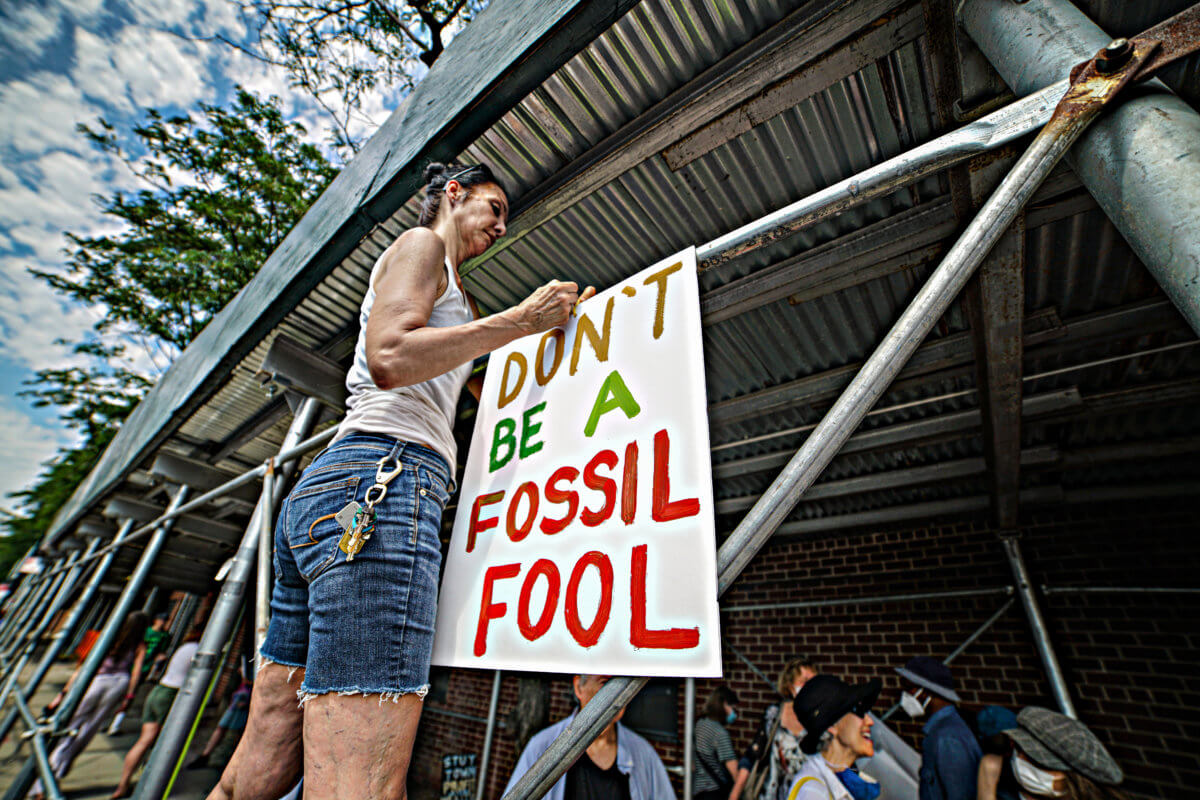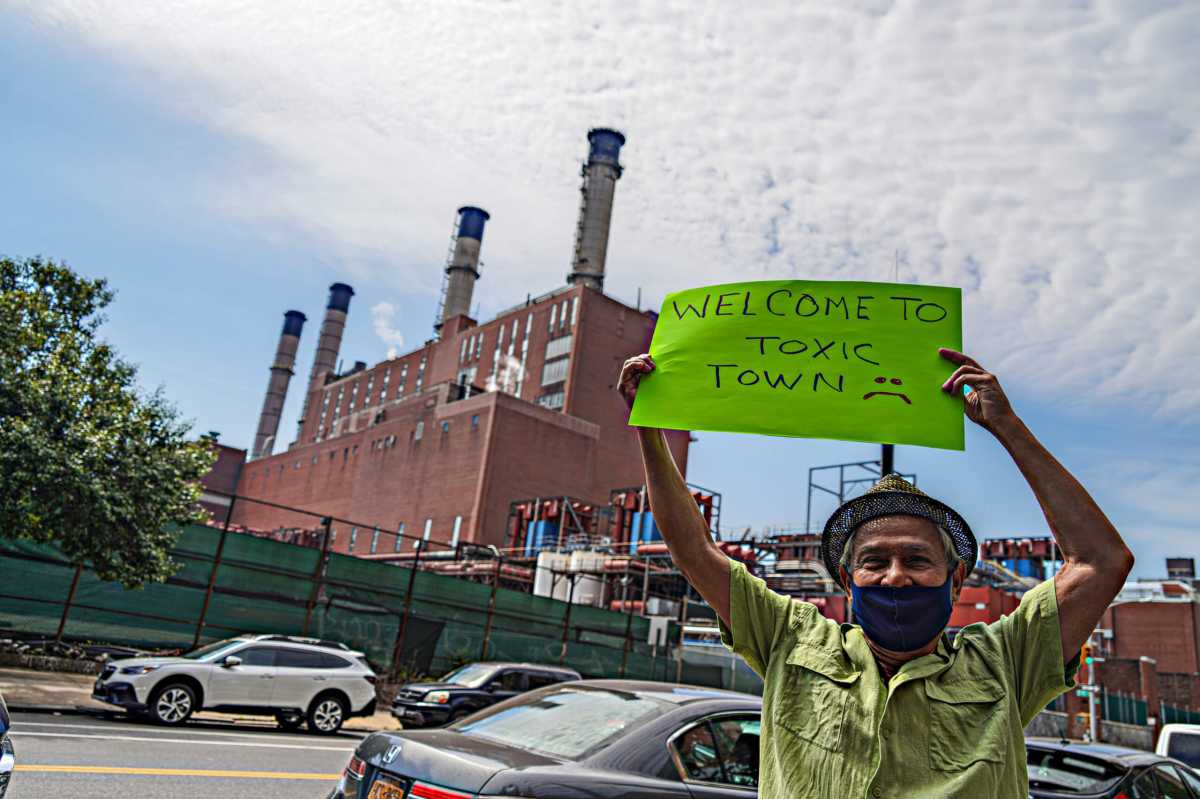Stuyvesant Town-Peter Cooper Village residents want a cleaner way to power up.
The East Side apartment complex is known for constantly and consistently adding amenities for its 110 buildings and 11,250 apartments for residents to enjoy, including basketball and tennis courts, two fitness facilities, a café, and more. However, there is one new upcoming addition to the complex that some in the development are vehemently opposing.
On Sunday morning, the Stuyvesant Town-Peter Cooper Village Tenant Association led a rally alongside fellow residents on Avenue C between 15th and 16th Streets to push back against two new fuel plants currently under construction.
A flood of elected officials, Council Member Keith Powers, Congress Member Carolyn Maloney, Manhattan Borough President Gale Brewer, State Senator Brad Holyman, and Assembly Member Harvey Epstein, along with leaseholders gathered beneath the scaffolding that is currently being used to help erect one of the controversial facilities.
For the tenant association, opposing the new fuel plants isn’t just about protecting the environment — but also the health and safety of the complex’s residents.
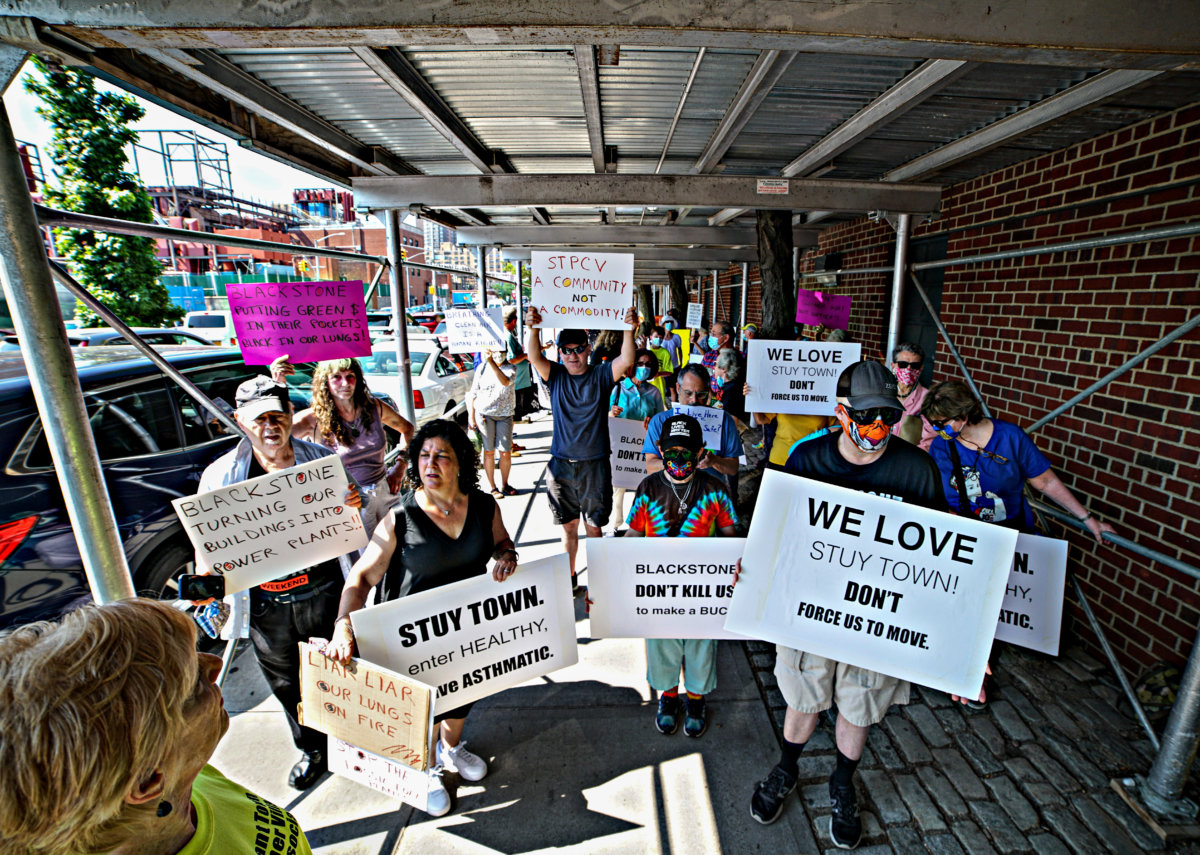
“These plants will have the potential to increase carbon dioxide and NOx,” said Susan Steinberg, president of Stuyvesant Town-Peter Cooper Village Tenant Association. “Burning fossil fuel increases particle matter which lodges in people’s lungs and ozone, and studies have shown that people who are exposed to high levels of these pollutants have health impacts — they have cardiac disease, they have respiratory disease, and they have cancer.”
The proposed plants are being erected in the shadow of the massive, nearby Con Edison power plant. Residents argue that they will not only be sandwiched between three power stations, but the two latest constructs will burn natural gas, reduce air quality, and add emissions which many children growing up in the area will breathe.
Attendees accused Blackstone — the property management — of putting profits before their residents’ lives.
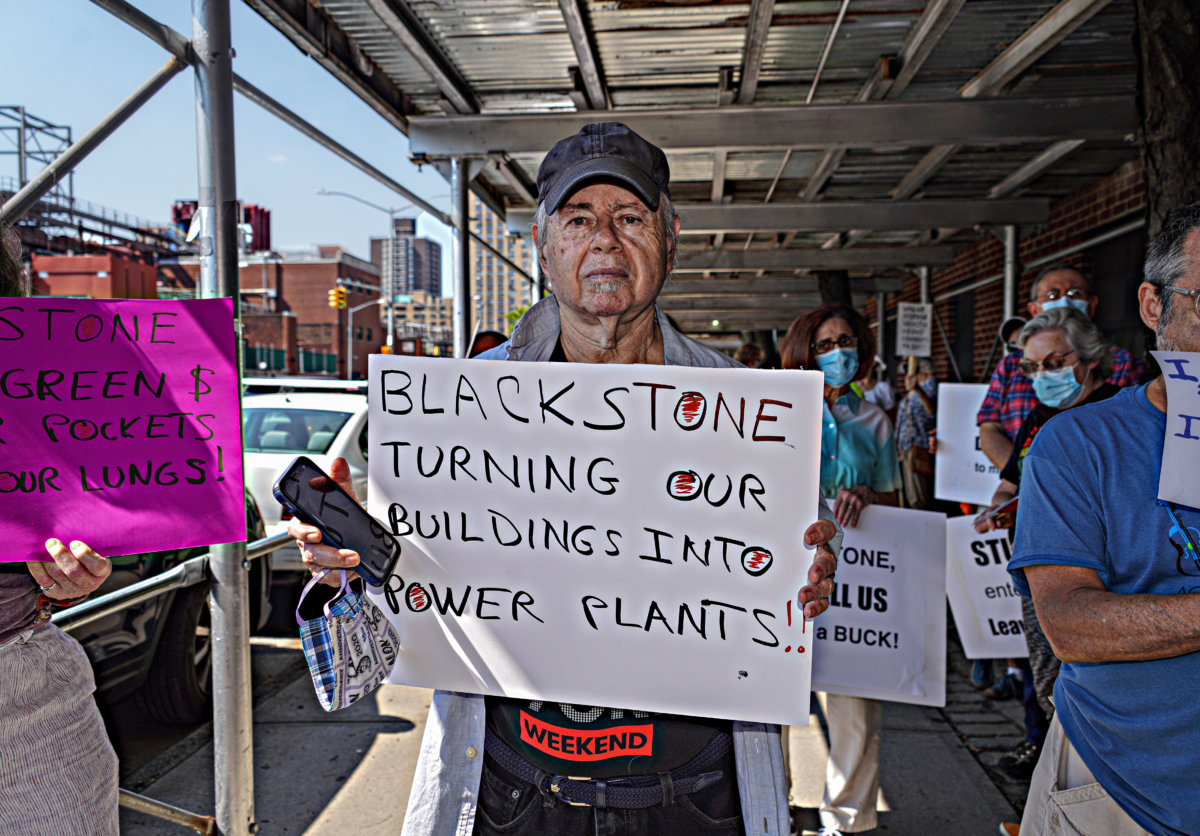
“If you look across the street from us, that is Con Edison, that is our neighbor,” said Powers, who also lives in the community. “My neighbors have reached out to me with concerns of the emissions directly next to their window near their playground where their kids play in their community. These concerns include the negative health implications of living so close to these plants, the potential harm to the environment, and the precedent that would be set if we allow these to be built in a residentially zoned community.”
Powers shared that in 2018 management first announced their plans to create a combined heat and power (CHP) plant to be constructed between 245 and 271 Avenue C, which would provide steam for 24 buildings in the complex.
According to the tenant association, they claim the electricity generated would go back to Con Edison, which they state would benefit the owners but not the tenants.
The elected officials expressed their concern on how the approval process for the construction occurred before the environmental review was conducted and concluded. Tenants and their representatives are requesting that the construction be placed on hold so that the plans can go under public review and have DOB audit the proposed plant.
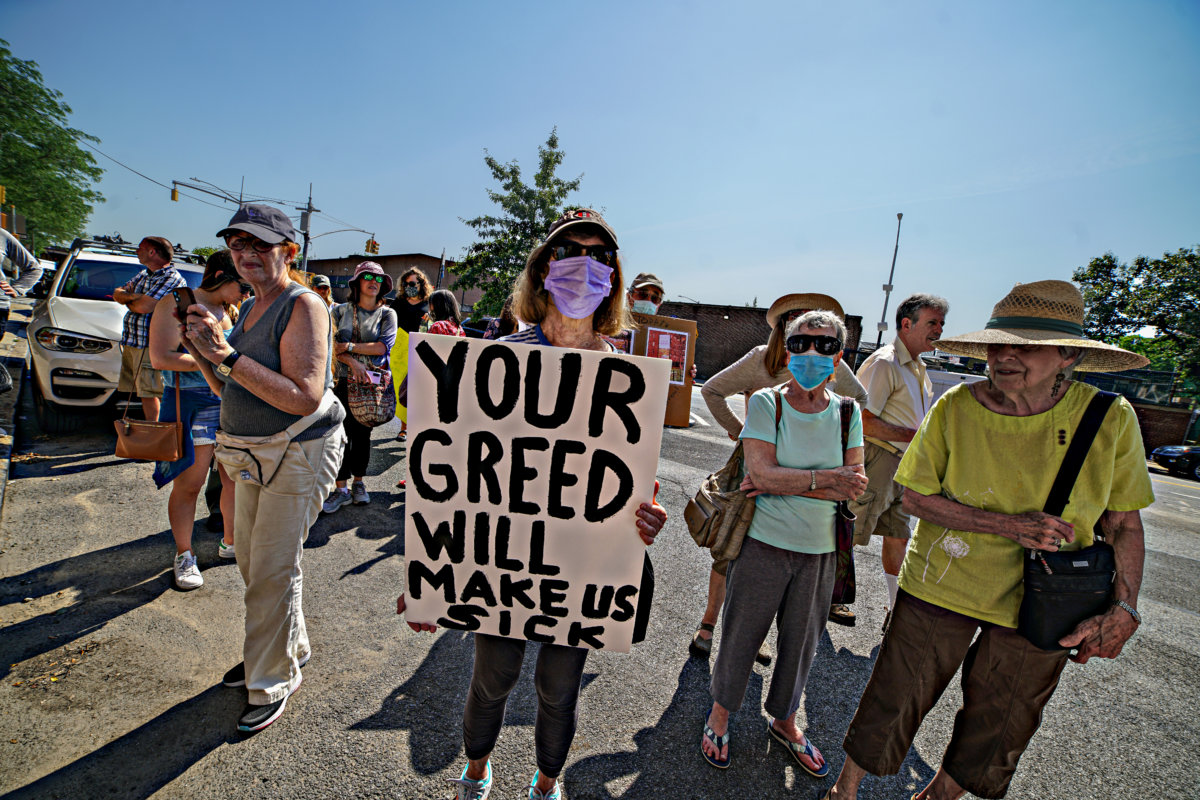
A spokesman for Beam Living, a company that manages the site for Blackstone, says that no new construction is currently underway, and that it will continue to comply with all state and local permitting requirements. The next steps include a public review process, which they say will likely take place over the summer, allowing for a formal engagement with the community.
Fran has lived in StuyTown for 24 years and is adjacent to the next proposed power plant. She says she lives in constant fear and anxiety for what is to come.
“This is wrong. This is about adding pollution upon pollution upon pollution,” Fran said, adding, “This is about a big corporation adding green to their pockets and black in our lungs.”
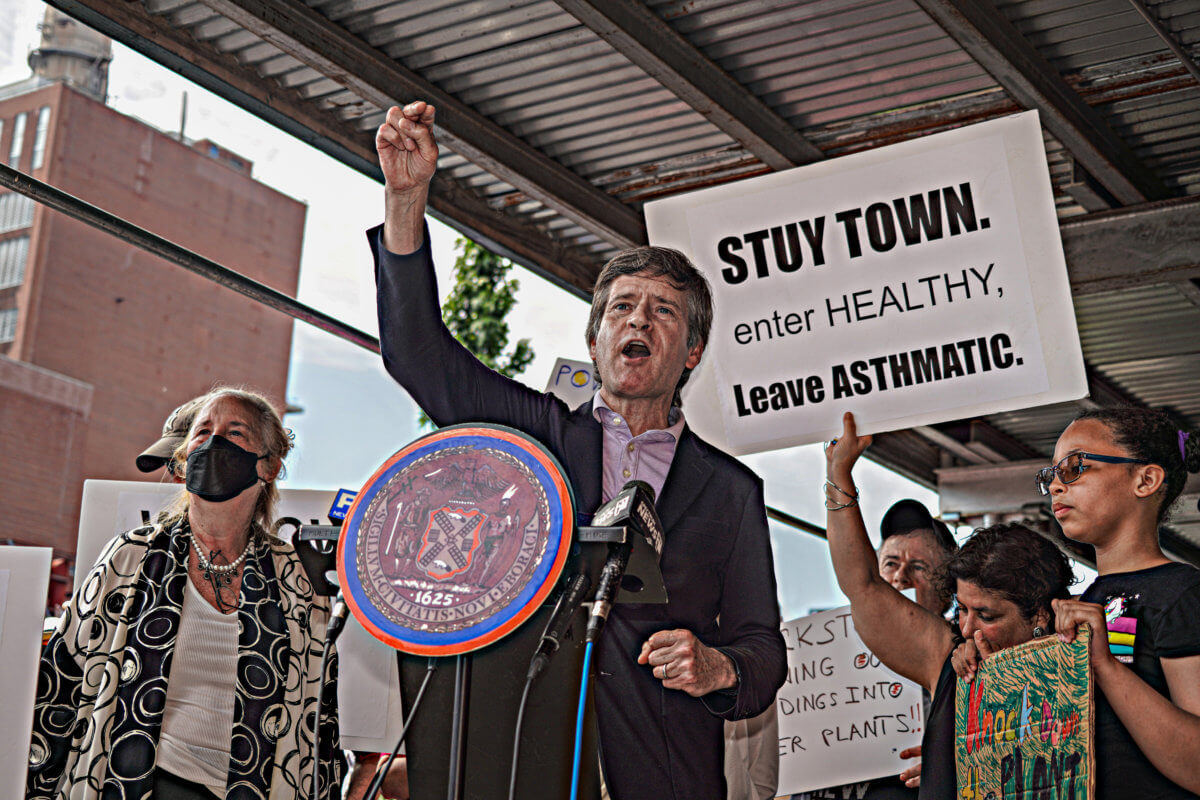
In addition to the thousands of Stuyvesant Town-Peter Cooper Village residents that will be affected by these plants, Assembly member Harvey Epstein pointed out that other nearby community members such as NYCHA’s Pedro Albizu Compos Plaza will also bear the brunt of the health costs.
Holyman agreed, having some harsh words for the management.
“We deserve better than this now. I don’t know, maybe Blackstone should change their name to black lung because that is exactly what they are going to precipitate if they continue with this plan. Let me also say that as elected officials, we’ve known very little about this project. We were informed at the last minute. There have not been the hearings that we need or the public discussion that we deserve.”
In response to the protest, Nadeem Siddiqui, general manager of Stuyvesant Town-Peter Cooper Village, provided amNewYork Metro with a statement:
“The project will significantly reduce source greenhouse gas emissions and is part of our ongoing efforts to ensure Stuyvesant Town-Peter Cooper Village remains a model for best-in-class sustainability practices. The STPCV community has benefited from $25 million in sustainability investments during our ownership, including a switch to LED for 13,000 lightbulbs and installation of solar panels on all building roofs – which doubled Manhattan’s solar capacity and is equivalent to taking twelve thousand cars off the road annually. Stuy Town was the first residential LEED Platinum Community and recently received an “A” grade from New York City for building energy efficiency. This significant investment is our next step in community resilience and energy transformation to modernize our 74-year-old buildings, and we are committed to keeping the community updated as we work through state and city approvals.”
Siddiqui assured the project will remove the complex’s reliance on ConEd steam, so that in the event of power failure the site will retain steam for hot water. He also states that the electricity and steam produced will only generate enough to service residents.
Siddiqui shared that the company is in the process of working with the required engineering studies and the appropriate environmental studies, which will be published once approved. Additionally, it was added that this project will be at no cost to the residents, no additional noise, will not impact greenspace, and there will be no difference to the power, heat or hot water within the apartments.
